Introduction to Green Bean Cultivation
Green beans (Phaseolus vulgaris), also known as string beans or snap beans, are a legume widely cultivated for their tender pods, which are consumed as fresh vegetables. Their cultivation is relatively simple and adapts to various climatic conditions, making them a popular choice in both home gardens and commercial production. This article provides a comprehensive guide on green bean cultivation management, from land preparation to harvest and post-harvest handling, aiming to maximize yield and product quality.
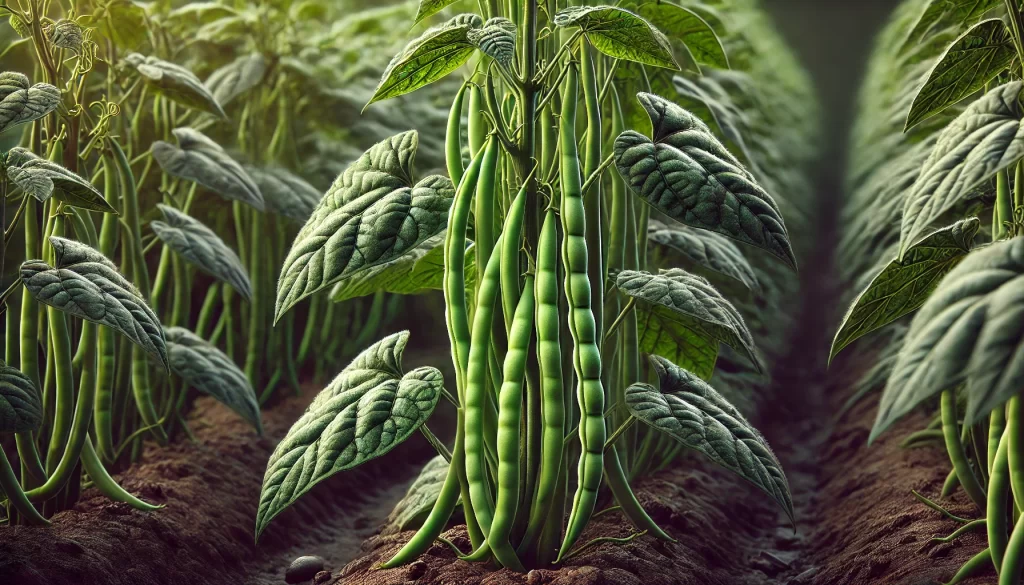
Land Selection and Soil Preparation
Ideal Climatic Conditions
Green beans thrive in temperate and warm climates, with optimal temperatures between 15°C and 25°C. Although resilient, green beans do not tolerate frost or extreme temperatures well, so planting should be scheduled during frost-free seasons. Direct sunlight is essential for good plant development and high pod production.
Soil Selection
Green beans prefer well-drained, fertile soils with a good content of organic matter. Sandy loam or loamy soils with a pH between 6.0 and 7.0 are ideal for their cultivation. It is important to avoid soils with drainage problems, as they can lead to root diseases.
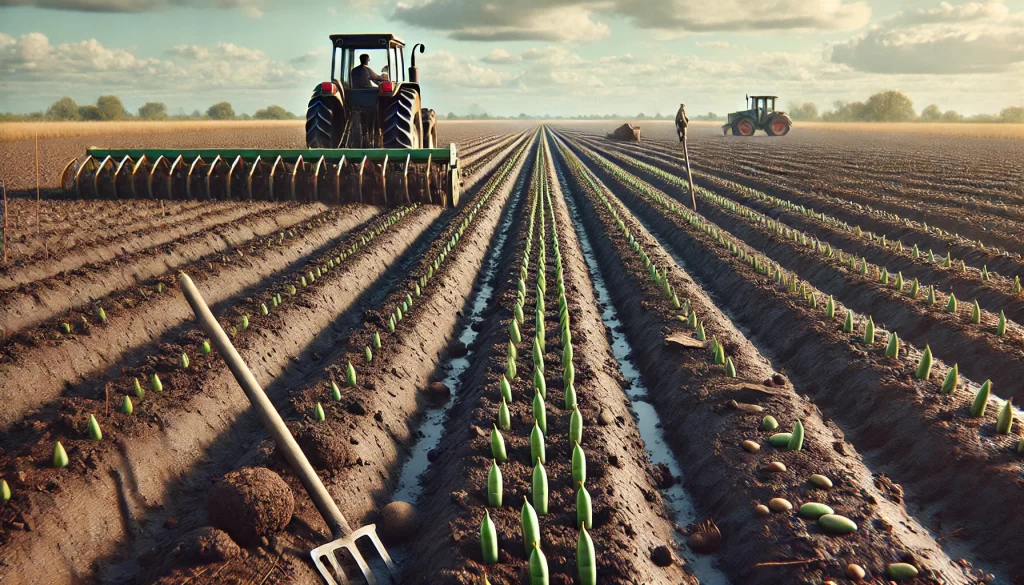
Soil Preparation
- Deep Tillage: Perform deep tillage to improve soil structure and facilitate root development.
- Organic Matter Incorporation: Add compost or well-decomposed manure to improve soil fertility and water retention capacity.
- Adequate Drainage: Ensure good drainage to avoid waterlogging that could negatively affect crop development.
Green Bean Sowing and Planting
Sowing Methods
Green beans are sown directly in the field, allowing for quick plant establishment and development. Sowing is done in rows or furrows, depending on management practices and land conditions.
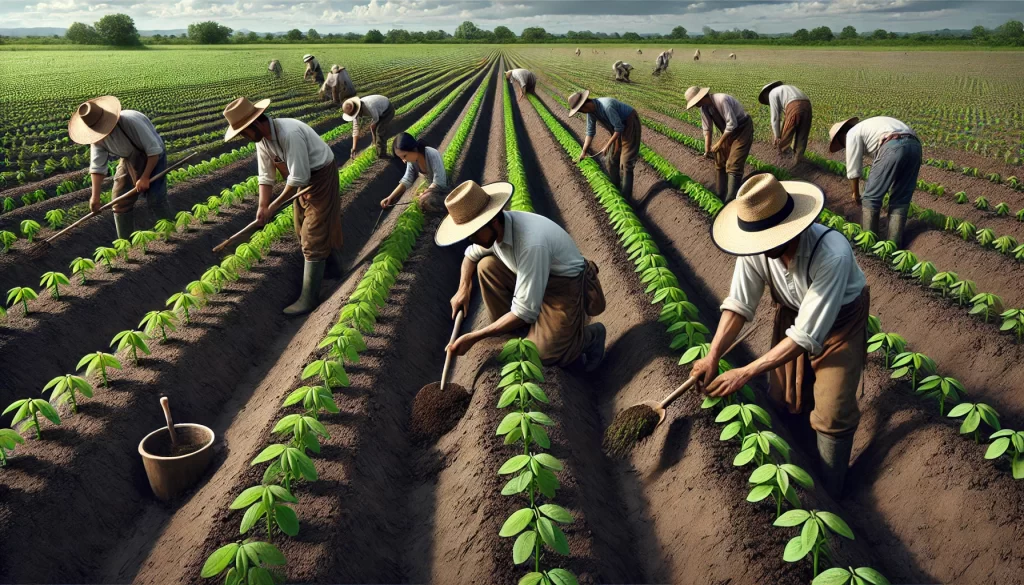
Seed Preparation
- Seed Selection: Use certified, disease-free seeds to ensure uniform germination and good yield.
- Seed Treatment: Seeds can be treated with fungicides and rhizobium inoculants to improve germination and nitrogen fixation.
Direct Sowing
- Sowing Depth: Seeds should be sown at a depth of 2 to 4 cm, depending on soil texture and climatic conditions.
- Spacing: A spacing of 5 to 10 cm between plants and 40 to 60 cm between rows is recommended, depending on the variety and management practices.
Sowing Season
Green bean sowing typically takes place in the spring, once the risk of frost has passed and soil temperatures are adequate. In warmer climates, they can also be sown in late summer for a fall harvest.
Irrigation and Water Management
Green Bean Water Requirements
Irrigation is essential for green bean development, especially during germination, flowering, and pod filling. Water needs vary according to the growth stage:
- Germination and Establishment: Moderate irrigation to ensure uniform germination and the establishment of vigorous seedlings.
- Vegetative Growth: Maintain consistent irrigation to promote healthy and vigorous growth.
- Flowering and Pod Filling: Provide adequate irrigation during these critical stages to ensure well-filled, high-quality pods.

Irrigation Systems
- Drip Irrigation: This is the most efficient system for green bean cultivation, as it provides water directly to the root zone, minimizing evaporation losses and ensuring efficient water use.
- Sprinkler Irrigation: Suitable for large areas, but should be managed carefully to avoid excessive wetting of leaves, which could promote the onset of diseases.
Green Bean Fertilization
Nutritional Requirements
Green beans, like other legumes, have the ability to fix atmospheric nitrogen through symbiosis with rhizobium bacteria, reducing their need for nitrogen fertilizers. However, a balanced fertilization plan is important to ensure optimal yield.
- Phosphorus (P): Crucial for root development and pod formation.
- Potassium (K): Improves disease resistance and pod quality.
- Micronutrients: Zinc, molybdenum, and iron are important for overall plant health and nitrogen fixation.
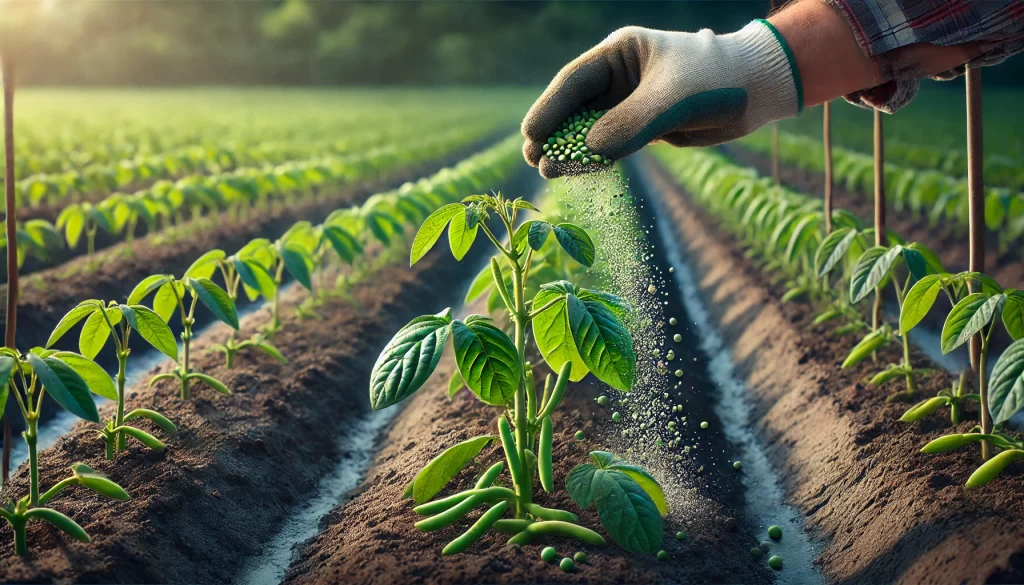
Fertilization Plan
- Base Fertilization: Apply phosphorus and potassium before sowing to prepare the soil.
- Top-Dressing Fertilization: Make additional applications of phosphorus and potassium during the crop cycle, adjusting doses based on soil analysis and plant development.
- Seed Inoculation: Inoculate seeds with rhizobium bacteria before sowing to improve nitrogen fixation.
Pest and Disease Management
Common Pests
Pest management is essential to maintain the health of green bean plants and ensure the production of high-quality pods. The most common pests include:
- Aphids: Affect young shoots and can transmit viral diseases.
- Thrips: Small insects that feed on sap, causing deformations in leaves and pods.
Control Strategies
- Regular Monitoring: Inspect plants regularly to detect pests in a timely manner.
- Biological Control: Introduce natural predators such as ladybugs and parasitic wasps.
- Insecticide Application: Use specific products following technical recommendations to minimize environmental impact and avoid resistance.
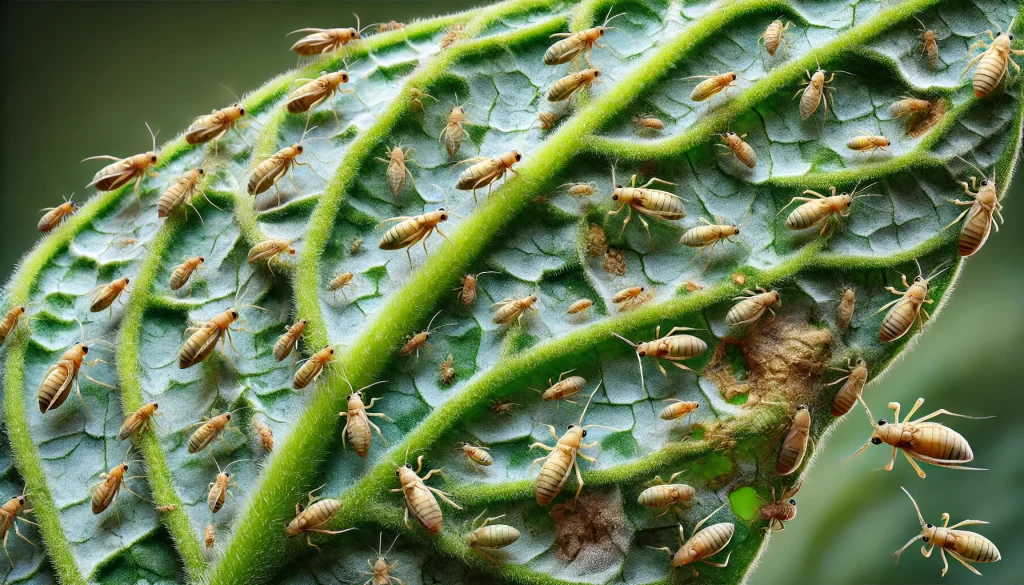
Common Diseases
Diseases can significantly affect green bean crop productivity. The most common ones include:
- Powdery Mildew (Erysiphe polygoni): A fungus that affects leaves, forming a white layer that reduces photosynthesis and plant vigor.
- Anthracnose (Colletotrichum spp.): A disease that causes dark spots on pods and leaves, reducing quality and yield.
Control Strategies
- Sanitary Management: Remove parts affected by diseases to reduce spread.
- Fungicide Use: Apply preventive and curative fungicides under conditions favorable for disease development.
- Crop Rotation: Avoid planting green beans in the same area for several consecutive years to reduce disease pressure.
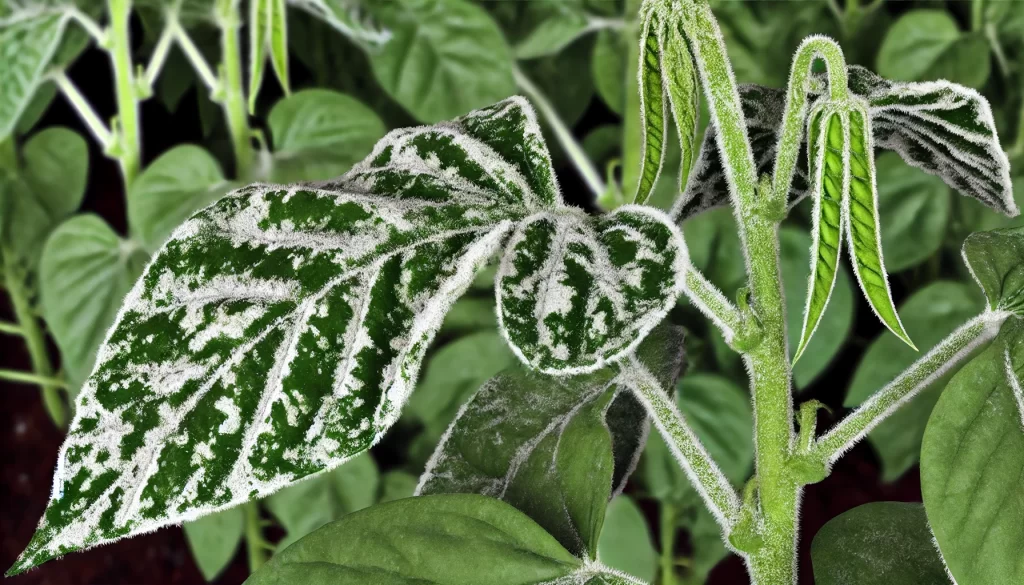
Harvest and Post-Harvest Management
Maturity Indicators
Green beans are harvested when the pods have reached an adequate size and are tender, which can be determined by:
- Pod Size: Pods should be uniform in size and have a bright green color.
- Texture: Pods should be crisp and smooth to the touch, without signs of hardening or lignification.
Harvesting Techniques
Harvesting is done manually, cutting the pods with a knife or scissors, leaving a small peduncle. It is important to handle the fruits carefully to avoid damage that could reduce their shelf life.
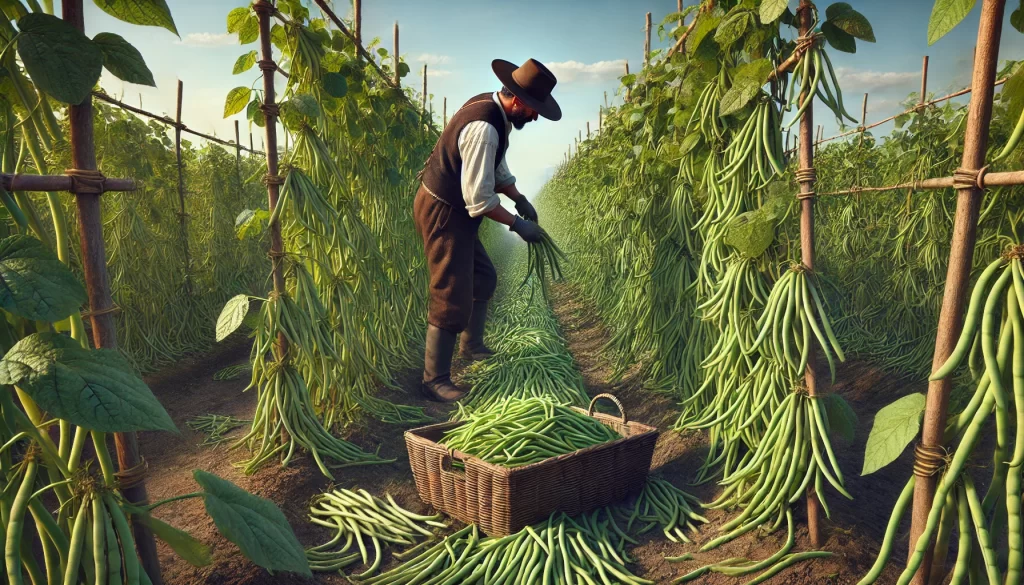
Post-Harvest Management
Post-harvest management is crucial to maintaining the freshness and quality of green beans until they reach the final consumer. Recommended practices include:
- Washing and Sorting: Remove impurities and sort the pods by size, color, and quality.
- Storage: Keep the pods in a cool place, preferably at a temperature of 4-7°C, to prolong their shelf life.
- Transportation: Transport the pods in ventilated boxes to avoid physical damage and preserve their quality during transport to the market.
 AgronoBlog – Agriculture Blog
AgronoBlog – Agriculture Blog